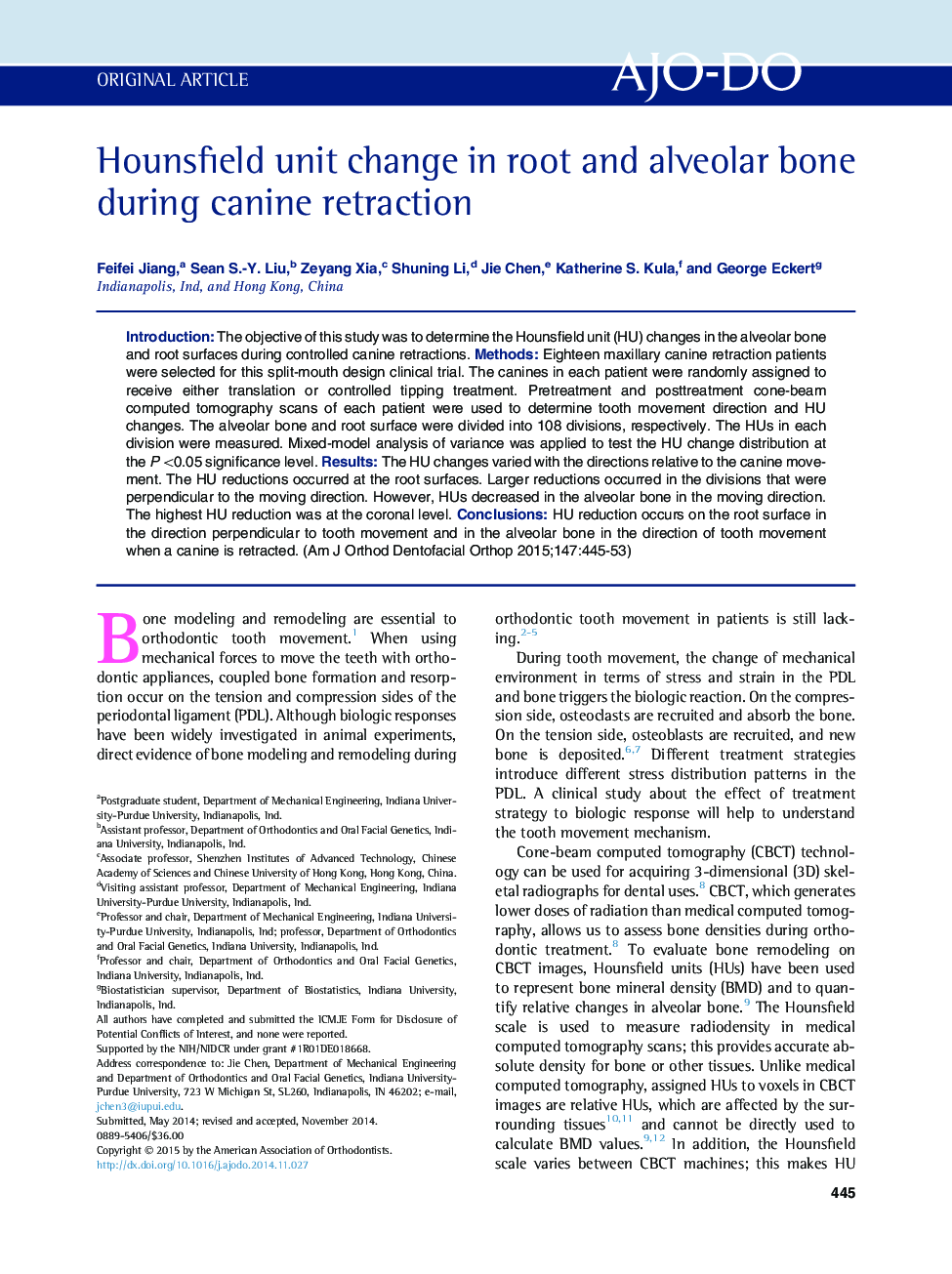| Article ID | Journal | Published Year | Pages | File Type |
|---|---|---|---|---|
| 3115639 | American Journal of Orthodontics and Dentofacial Orthopedics | 2015 | 9 Pages |
•We studied the mineral density changes in the alveolar bone and root surface during controlled canine retractions.•The mineral density was represented by Hounsfield units (HU).•HU reductions occurred on the root surface in the direction perpendicular to tooth movement.•HU reductions occurred in the alveolar bone in the direction of the tooth.
IntroductionThe objective of this study was to determine the Hounsfield unit (HU) changes in the alveolar bone and root surfaces during controlled canine retractions.MethodsEighteen maxillary canine retraction patients were selected for this split-mouth design clinical trial. The canines in each patient were randomly assigned to receive either translation or controlled tipping treatment. Pretreatment and posttreatment cone-beam computed tomography scans of each patient were used to determine tooth movement direction and HU changes. The alveolar bone and root surface were divided into 108 divisions, respectively. The HUs in each division were measured. Mixed-model analysis of variance was applied to test the HU change distribution at the P <0.05 significance level.ResultsThe HU changes varied with the directions relative to the canine movement. The HU reductions occurred at the root surfaces. Larger reductions occurred in the divisions that were perpendicular to the moving direction. However, HUs decreased in the alveolar bone in the moving direction. The highest HU reduction was at the coronal level.ConclusionsHU reduction occurs on the root surface in the direction perpendicular to tooth movement and in the alveolar bone in the direction of tooth movement when a canine is retracted.
